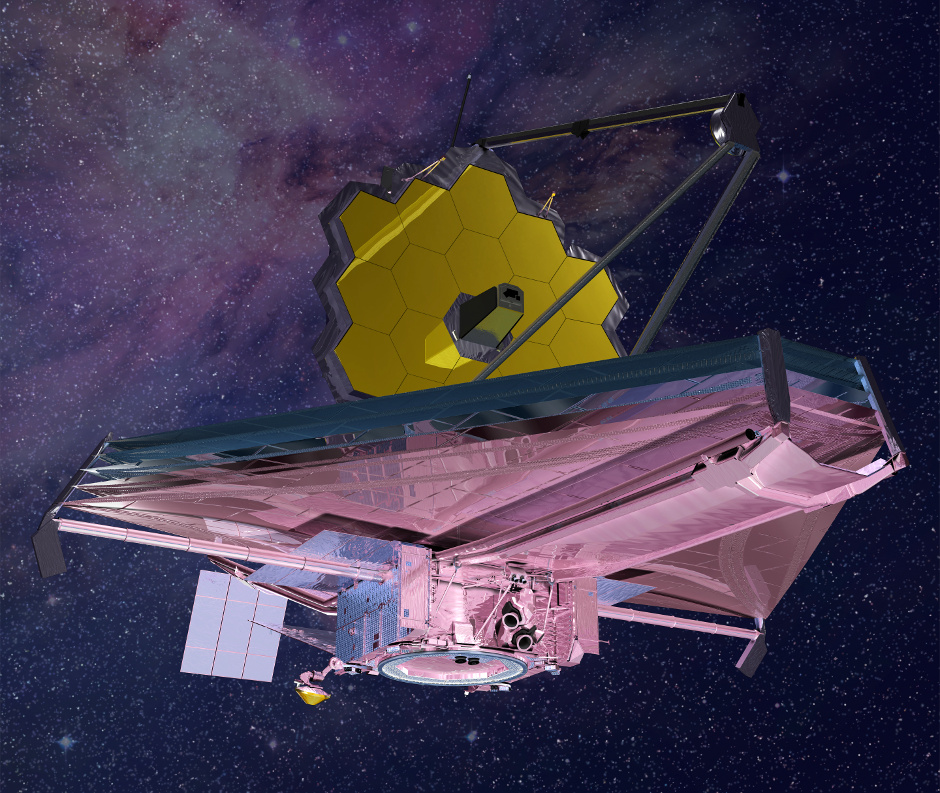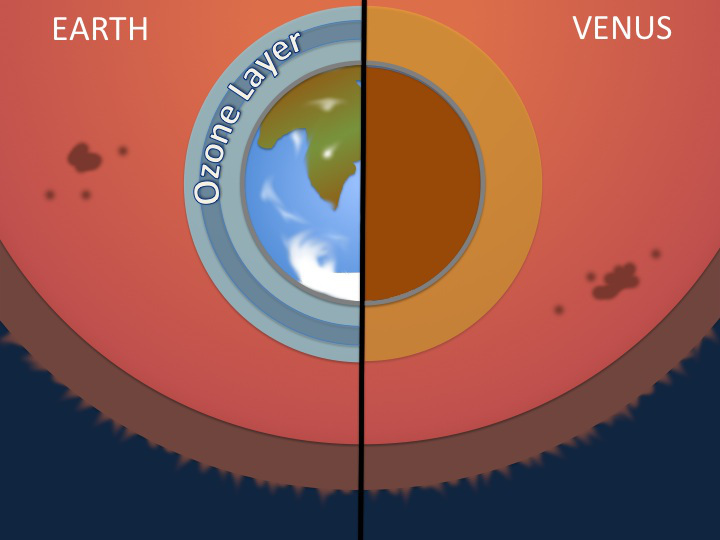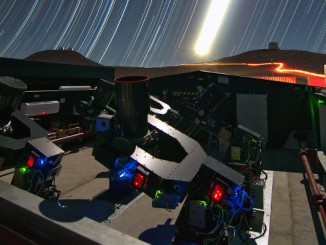
Our colourful X-ray Sun

Blue-white areas showing X-rays from the most energetic spots come from NASA’s Nuclear Spectroscopic Telescope Array (NuSTAR), which usually studies the mysteries of black holes and supernovae. NuStar data shows that the X-ray emission from these areas has an energy of two-six kiloelectron volts. Green areas depicting lower-energy processes (0.2-2.4 kiloelectron volts) come from the X-ray Telescope Instrument on the Japan Aerospace Exploration Agency’s (JAXA) Hinode spacecraft. Yellow and red areas show ultraviolet light with a wavelength between 171-193 Angstroms (10-10 metres) from NASA’s Solar Dynamics Observatory.
“We can see a few active regions on the Sun in this view,” says Hannah. “Our Sun is quietening down in its activity cycle, but still has a couple of years before it reaches a minimum.” The Sun has an activity cycle of around 11 years. During peaks the Sun’s surface hosts lots of solar flares and coronal mass ejections (huge magnetic bubbles of charged material spat into space). They occur when the Sun’s powerful magnetic field lines become tangled up, broken, and then reconnect. These peak periods will also see lots of sunspot activity on the Sun’s surface. On the other hand, quiet, lull periods in the cycle sees such activity almost come to a halt.
Due to its extreme sensitivity, NuSTAR’s telescope cannot view large flares. But it can help measure the energy of smaller ones, called ‘microflares’, which produce one-millionth the energy of larger versions. It may also be able to directly detect hypothesised ‘nanoflares’, which contain a billionth of the energy of a standard flare. Nanoflares may help to explain why the Sun’s tenuous, extended atmosphere; the corona, is a million degrees hotter than its surface, which is only 5,700 degrees Celsius. Nanoflares may emit high-energy X-rays that NuSTAR, with its sensitivity, may be able to detect. Astronomers suspect that these nanoflares, like the larger ones, can send electrons streaming at tremendous speeds. As these particles zip around, they emit X-ray photons.
“We still need the Sun to quieten down more over the next few years to have the ability to see these events,” says Hannah. He explains that whilst the Sun is now approaching a tranquil phase in its activity cycle, it has been showing spurious bouts of high activity. The images from NuSTAR should help astronomers pinpoint exactly where the energy from flares is released. Whilst it is known that energy is generally released in the Sun’s upper atmosphere, the actual physical mechanisms and locations are not yet entirely understood.
Cosmologists are looking forward to NuSTAR’s solar observations too. There is a remote hope that the telescope could detect a hypothesised dark matter particle called the axion. Dark matter is a mysterious, invisible substance in our Universe that is about five times more abundant than the regular matter that makes up stars, planets, gas and dust. The true nature of dark matter is entirely unknown as of yet, and NuSTAR may be able to address this aspect of space science too.
“What’s great about NuSTAR is that the telescope is so versatile. We can hunt for black holes millions of light-years away and we can also learn something fundamental about the star in our own backyard,” says Dr Brian Grefenstette of the California Institute of Technology; a scientist on the NuSTAR team.
Oculus Rift + Stellarium = virtual reality planetarium

Stellarium is an open-source planetarium application that anyone can download and use. The Oculus Rift is a much-publicised virtual reality headset, designed primarily for the gaming market. The idea behind StarSightVR is to marry the two in order to create a truly immersive user-experience, where one feels they are surrounded by the night sky. The hope is that the setup can be used for online planetarium lectures where users could connect to the server using their own headsets — using similar techniques to that of massive multiplayer online gaming.
Besides being a lot of fun, teaching in this way has obvious advantages. “I’ve always loved showing the stars to people, but now I can guarantee perfect, cloudless skies and show the Universe to people all around the world while they stay in the comfort of their own homes,” says Bruce, who was unable to attend the conference himself.
Volunteers using the system at the conference found it an interesting experience, including the author of this piece. As Lawrence himself says, the colour-correction is still a little off and resolution drops off away from the centre of the field of view. This is because Stellarium wasn’t written specifically for the Oculus Rift and so is not yet fully-optimised for it. However, as one moves their head around the sky, it tracks very smoothly. Various features that would normally hobble astronomers in the real world, such as the ground and atmosphere, can be easily switched off. One can go to any time or date and to any location on Earth (or even off it).
At the moment the sky does look as if it’s projected onto a flat screen (albeit one that conviently curves as you move your head around) and this is because the feed to each eye is the same. Thus there’s no stereo vision. But it’s one of many things that Bruce and Lawrence will work on — depending on user feedback. They also have plans to develop the project for other virtual reality platforms, such as the Samsung Gear. The addition of stellar parallax information is one feature that may appear in future versions. This would give one a sense of depth and distance between stars, which is something that would be impossible to experience in real life.
For more information: starsightvr.org.uk www.stellarium.org
Telling twins apart

The actual technique utilises transit spectroscopy, which is a variation of the transit method used to discover extrasolar planets (exoplanets) in the first place. In the transit method, a planet passing in front of its parent star (from our perspective) will measurably reduce the star’s light. This reduction has a particular profile that would betray a planet’s presence, and even whether it has an atmosphere. Transit spectroscopy would actually measure starlight absorbed by certain gases in that planet’s atmosphere — gases that may be signatures for life. Transit spectroscopy has been done before on exoplanets, but in very a limited way.

So instead, the team modelled spectra for Earth and Venus as if they were orbiting a smaller, but cooler, red dwarf star (M-class on the Hertzsprung-Russell diagram). They added in expected background noise, which was simulated, to give a realistic spectral profile. They also made an ensemble of different atmospheres — all with slight variations in chemical signature. Could they still spot the Earth? Yes. An absorption line for ozone — present in Earth’s atmosphere — was clearly visible. What about Venus? There was no ozone line (as expected) and carbon dioxide, the major constituent of Venus’s atmosphere, was present.
Matters are complicated by clouds and Venus is permanently enshrouded by them. Clouds distort the spectral signatures by ‘chopping them off’ and reducing an already-small signal. This is something astronomers will need to take into account when observing exoplanet atmospheres spectroscopically. Other complications, such as ultraviolet flux from the parent star, or cosmic rays, may result in different signatures for oxygen-rich atmospheres, giving misleading signals. An audience member attending the talk mentioned that the presence of both oxygen and methane in an atmosphere were required to be sure of the presence of life. As Barstow says, a better signal-to-noise ratio would be needed to discern methane’s presence.



